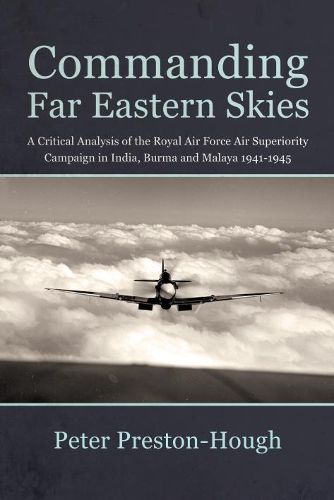Readings Newsletter
Become a Readings Member to make your shopping experience even easier.
Sign in or sign up for free!
You’re not far away from qualifying for FREE standard shipping within Australia
You’ve qualified for FREE standard shipping within Australia
The cart is loading…






This book analyses how the Allies lost air superiority during the initial exchanges with Japan, and how technical and material difficulties were overcome. The war in the Far East between 1941 and 1945 is occasionally referred to as the ‘Forgotten War’ and this description extends to the way the campaign’s air war has been analysed. However, the role of air power in Burma was vitally important to the campaign, in particular the attainment of air superiority in order to facilitate supply and close support operations. The foundation of these operations was dependent on the Allies achieving and maintaining air superiority and latterly air supremacy over the Japanese. The British lost air superiority during the initial Japanese attacks as their early warning system, aircraft, aircrew and tactics did not match their adversary’s capabilities.
AUTHOR: Dr Peter Preston-Hough was a visiting lecturer at the University of Wolverhampton and University of Chester. He had a lifelong interest in the history of the Royal Air Force particularly from 1939 and in airborne warfare from its earliest days. Peter died in 2017. 10 b/w photographs, 3 maps, 13 tables
$9.00 standard shipping within Australia
FREE standard shipping within Australia for orders over $100.00
Express & International shipping calculated at checkout
This book analyses how the Allies lost air superiority during the initial exchanges with Japan, and how technical and material difficulties were overcome. The war in the Far East between 1941 and 1945 is occasionally referred to as the ‘Forgotten War’ and this description extends to the way the campaign’s air war has been analysed. However, the role of air power in Burma was vitally important to the campaign, in particular the attainment of air superiority in order to facilitate supply and close support operations. The foundation of these operations was dependent on the Allies achieving and maintaining air superiority and latterly air supremacy over the Japanese. The British lost air superiority during the initial Japanese attacks as their early warning system, aircraft, aircrew and tactics did not match their adversary’s capabilities.
AUTHOR: Dr Peter Preston-Hough was a visiting lecturer at the University of Wolverhampton and University of Chester. He had a lifelong interest in the history of the Royal Air Force particularly from 1939 and in airborne warfare from its earliest days. Peter died in 2017. 10 b/w photographs, 3 maps, 13 tables